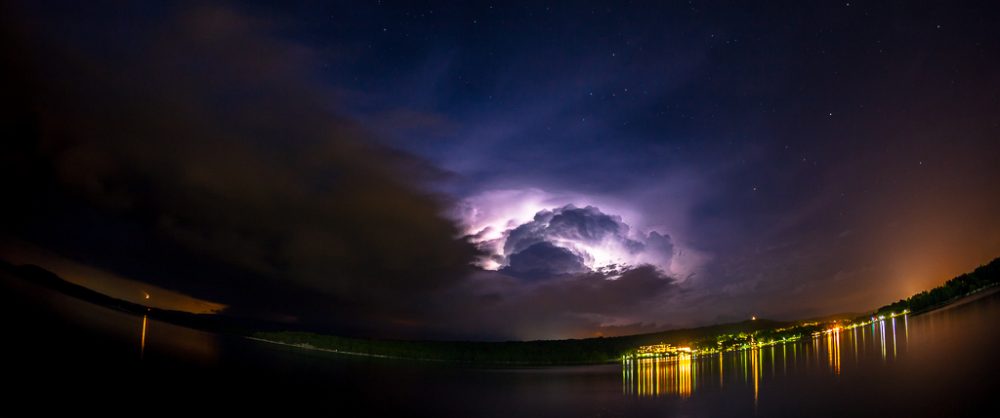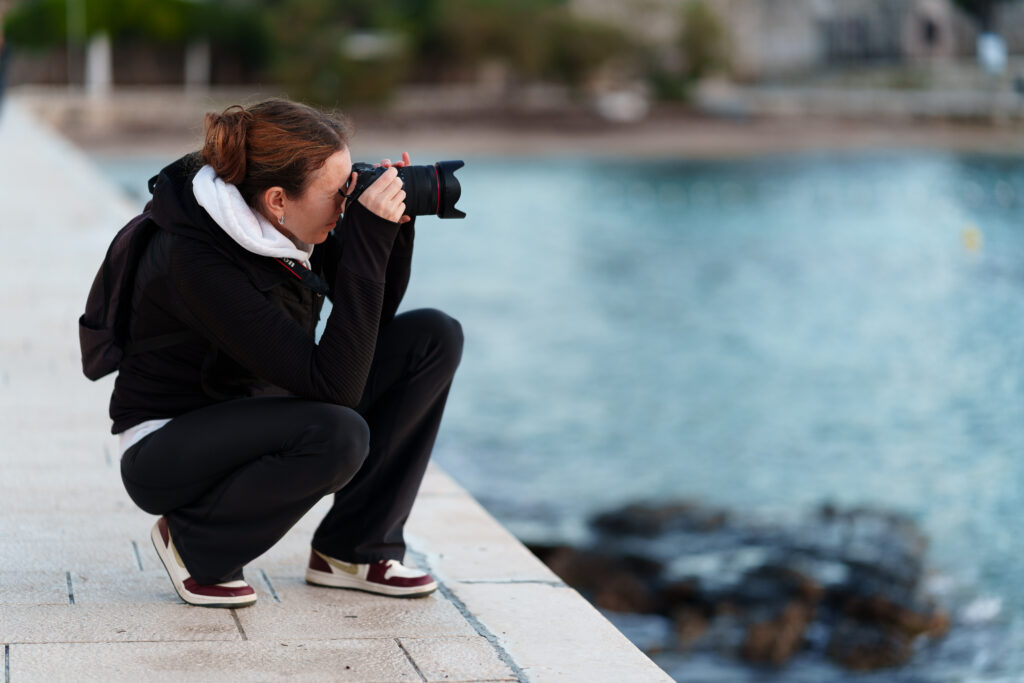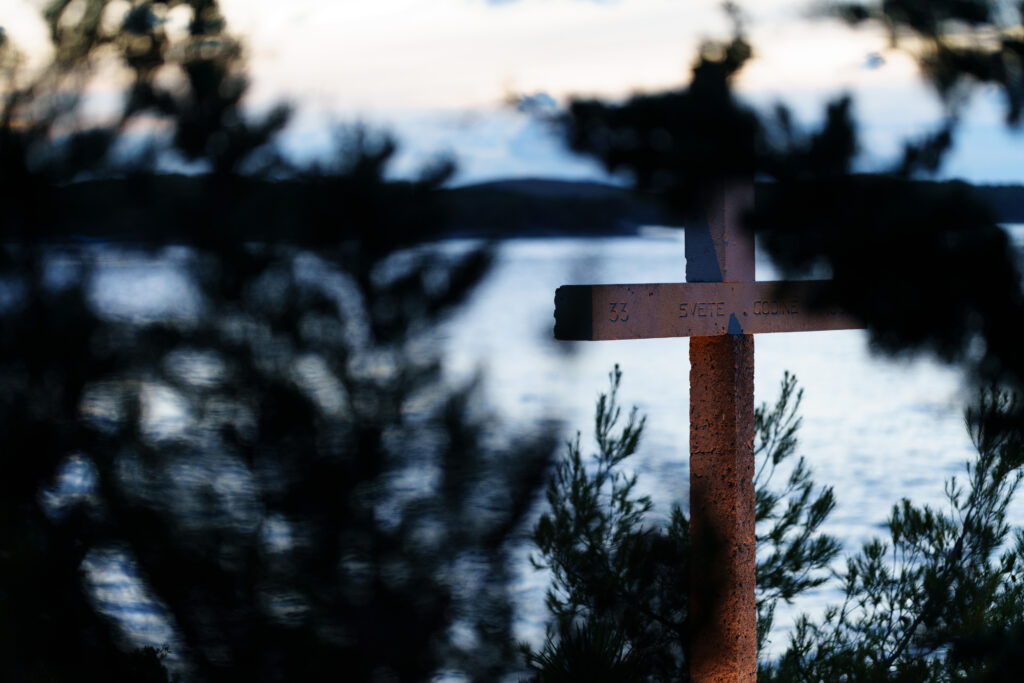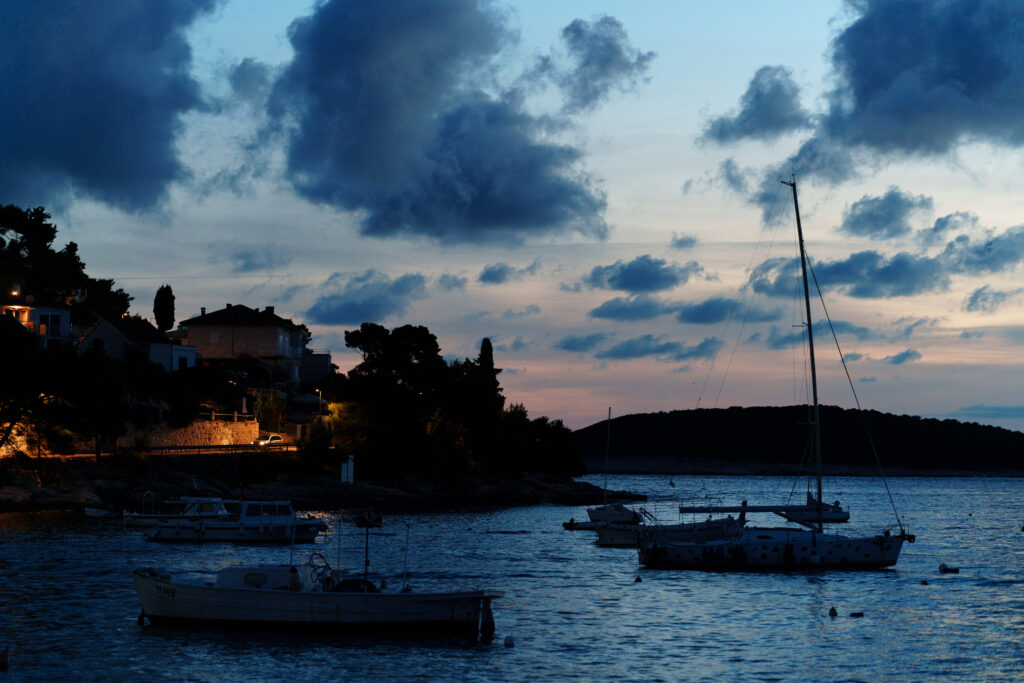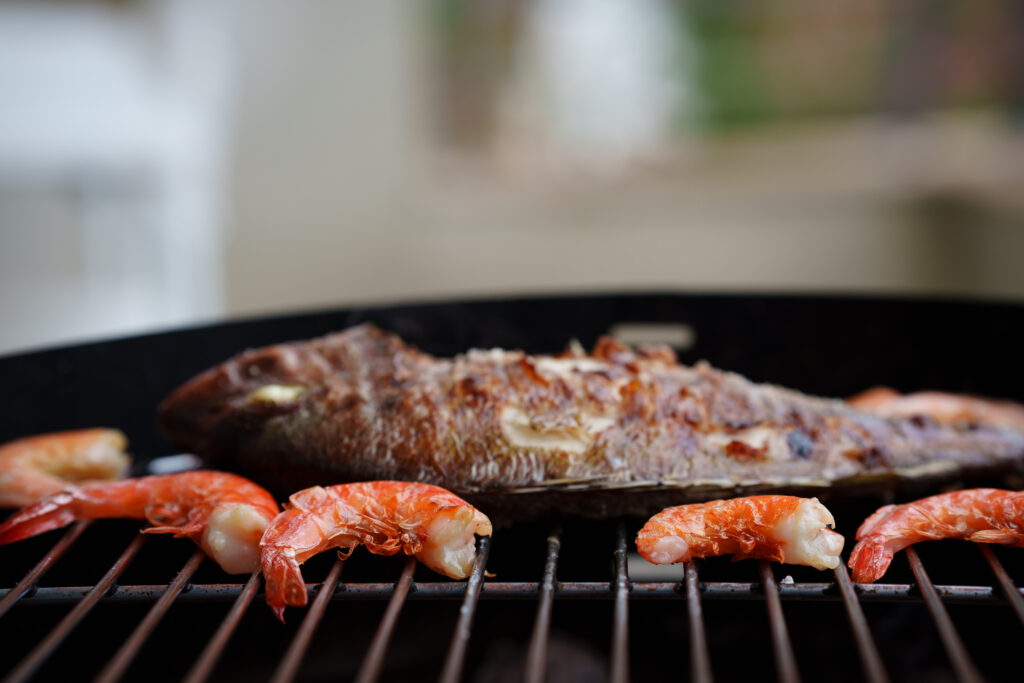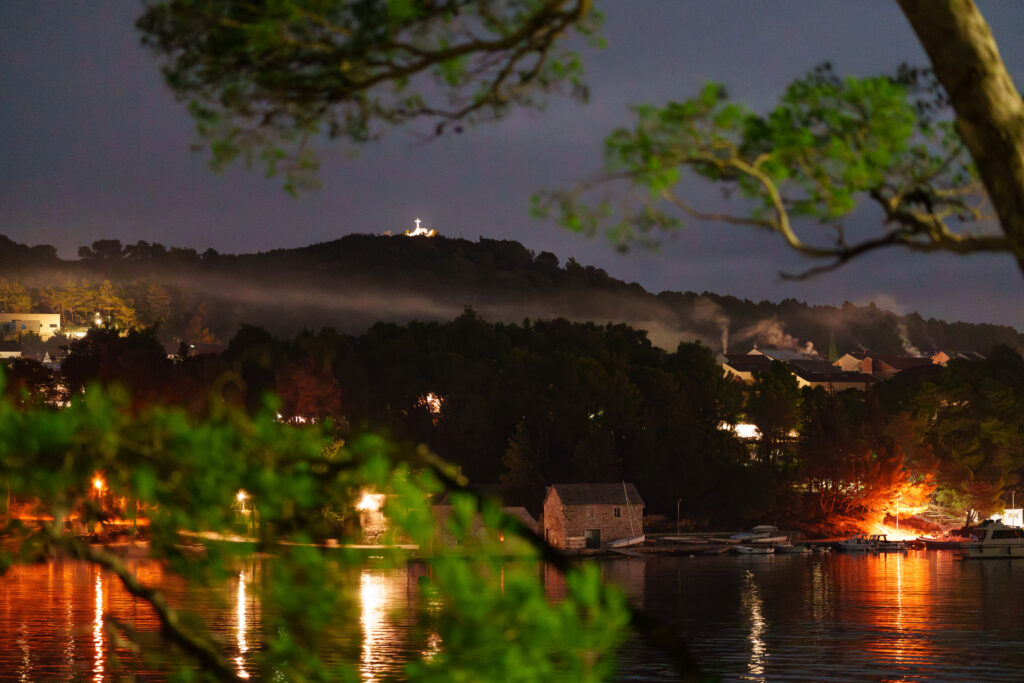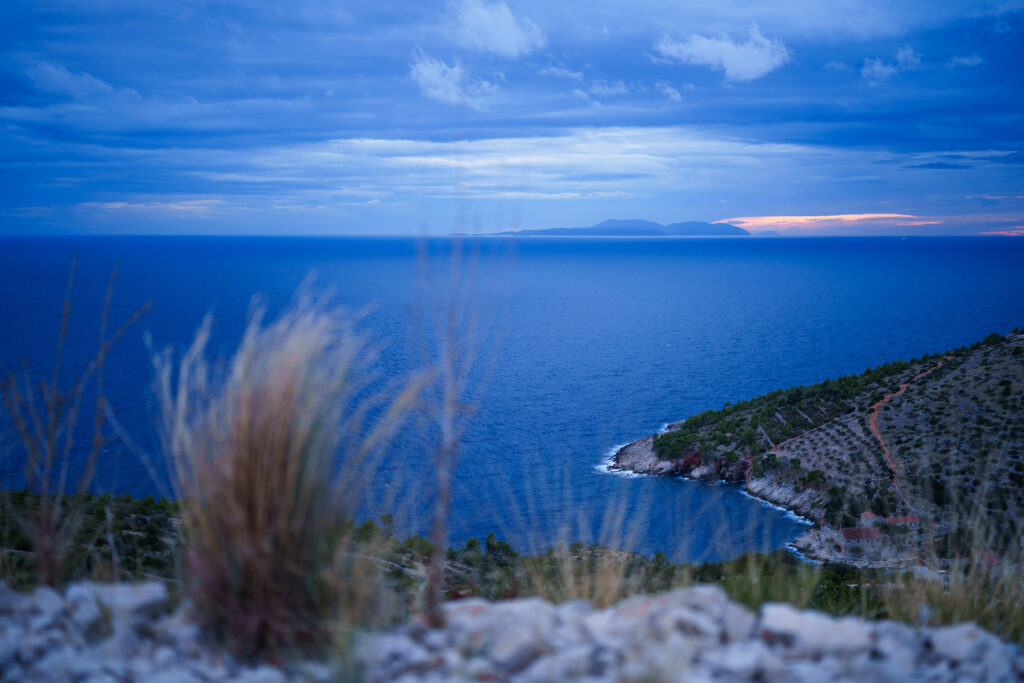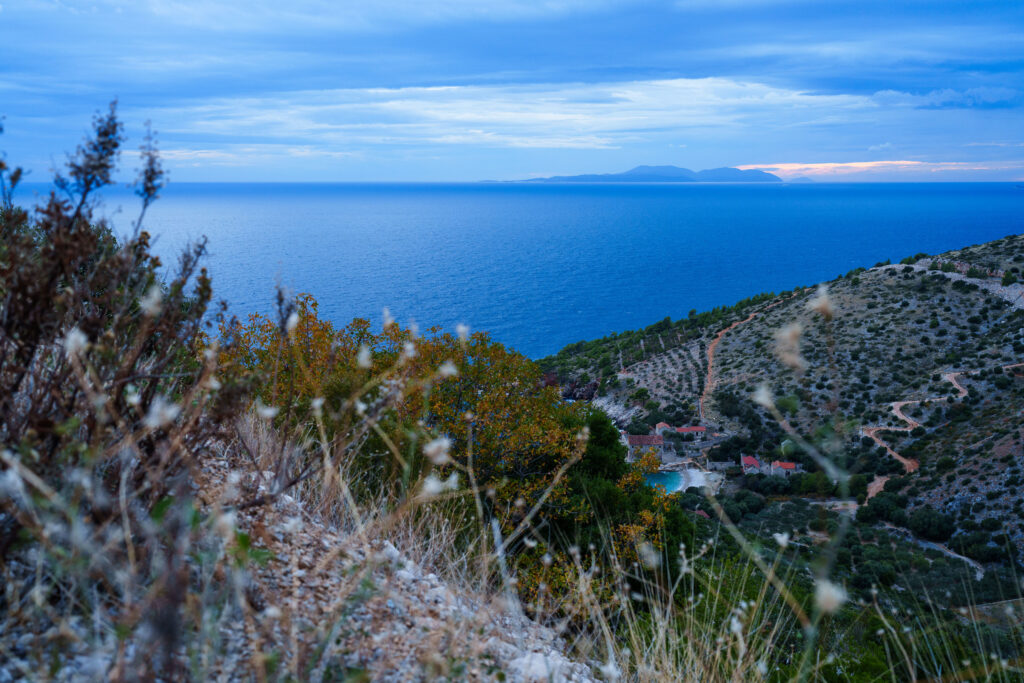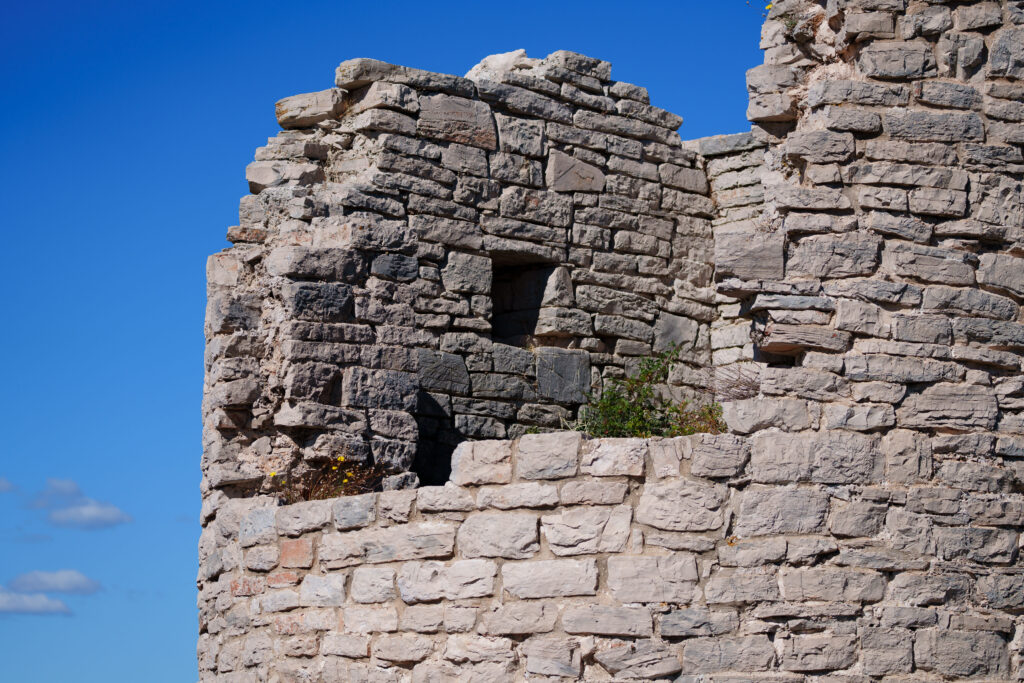I was thinking about something lately as I took a few uncommon pictures, because all the standard options were taken away from me – either there’s no light, or there’s a storm, or the wind is too strong, or it’s raining like crazy. So, we go out when we can, which can mean either in the middle of the night, or when the light is already gone, or the clouds are wrong, and what we do then is see what can be done with what remains when all the options you would actually have liked are taken away from you.
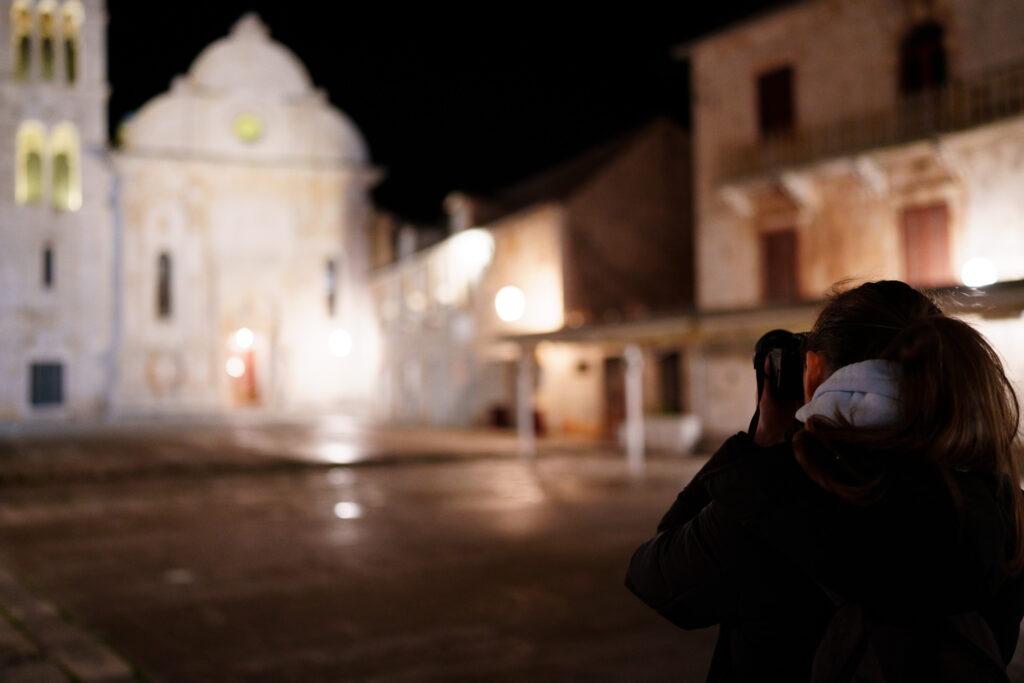
This, for instance, was taken in deep night, at the Hvar city square. There’s no natural light, but the artificial light reflected from the stone and blurred out creates a dreamy, toffee-like feeling that I like. Would I have taken this during the day? No. But it’s actually better than what I did get at that spot during the day.
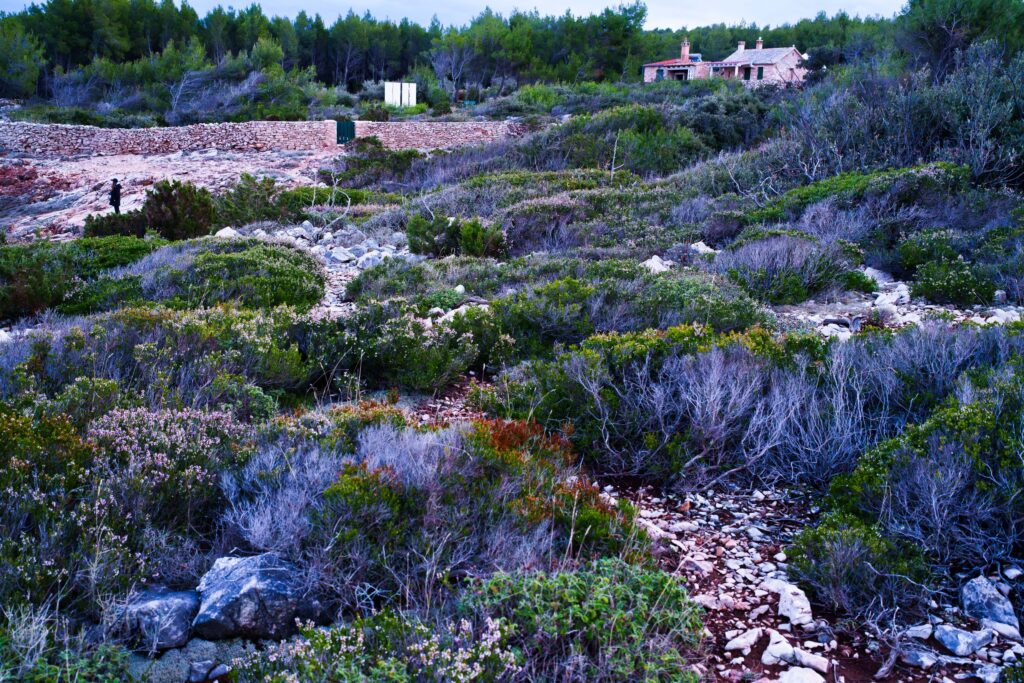
This is the next day, taken at the northern shore facing Brač, in such deep sunset that, in a few minutes, we could barely see where we’re going, which explains the bluish tone of the heather brush. Also, this is not the light I would have chosen, but it turned out to be quite interesting.
This fact that you don’t get the choices you want, but instead get to make your choices in the circumstances as they are, reminded me of how lots of people think, which came to my attention as I was spending their karmic trash.
You see, the worst sinners expect God to send an angel to warn and stop them in their wrongdoing – basically, a Darth Vader-like figure with obvious Divine power and authority will threaten them with Divine judgment if they do not stop whatever evil they are doing, and then they will not only stop, but go to one of their churches and testify for the power and authority of God and how it changed them, and so all other believers too will see that and be warned and uplifted, so nobody would sin again. Problem of sin solved; so why doesn’t God just do it that way, if he exists?
Because that’s an extremely stupid and naive idea. That’s not how things work. That’s not how sinners work, nor is it how people react to testimony.
I would know; I used to do something very similar, demonstrating God’s power and authority. Some people would be inspired and converted. Some would be shocked and scared, and then invent an alternative rationale, portraying it all as either a trick, or something demonic, or both, and they actually made it their mission to interfere with everything I was trying to do. Mind you, those were the people who actually saw Divine power in action, and still they did some kind of a brainfuck dance to convince themselves of whatever story that made them feel good about themselves and about turning the actual message upside-down.
Even when some people saw something and were perfectly convinced that it was of God, everybody else who didn’t see them had to either take their word for it, or invent some explanation why it’s all nonsense, because that’s much easier and more convenient; in almost all cases, they did the latter, and the typical atheist reaction to a witness of God’s presence is to just call them crazy, gullible, stupid and subhuman. I’m not exaggerating, that’s exactly what they did. It’s not guesswork on my behalf, but more than a decade of experience with atheists. They ask for evidence, but not in order to judge it fairly, but in order to dismiss it, so that they can say that evidence was presented and dismissed as flawed and unconvincing, and they think God will respond to that by repeatedly sending more evidence to be dismissed, because, I don’t know, it would be unfair to execute a criminal who finds evidence presented in the court of law unconvincing? Sorry to bring it to you, but the party on trial isn’t the one that gets to dismiss evidence. Nobody will ask them whether they found evidence acceptable and convincing or not; the absolute truth of the presented evidence will be known, and their reaction to this truth will also be known, and this is what will condemn them. In fact, even if nobody accepts evidence, and it is known that it was valid, every single person who rejected it will be condemned. It’s not a fucking democracy, people. Gods know what was shown, and they don’t give a damn about the rationalisations you invented in order to dismiss it. Your spiritual reactions will be known, and that to which you reacted will also be known. Every attempt to dismiss it will condemn you more. Every argument on how you had reason to believe it’s false will condemn you more. Every slanderous circular argument that only stupid sheep and idiots believed will condemn you, because you chose to slander the believers who reacted properly in order to justify your hatred of God. You also don’t get to set terms to God about what evidence you would find sufficient and convincing, because God is the one setting the bar for you, and judging you by what you do with what you were given. You don’t get to say that if a Darth Vader-like Angel came to threaten you, showing physical power to crush you like a bug, that you would have believed, because that’s not belief. When choice on how to interpret something is taken away from you, there’s no choice to be made; you will merely follow a line of self preservation, faced with an obvious superior and very physical force, but that’s not a spiritual reaction to a spiritual phenomenon, it’s a physical reaction to a physical phenomenon, like reacting to armed policemen. In order to test your spiritual qualities, the material part must be sufficiently subdued in order not to interfere with the perception of spiritual phenomena. This means, essentially, that it’s important to see how your soul reacts to God’s presence, not how your body reacts to a threat of overwhelming physical force. Of course you would be afraid of something that threatens to physically crush you on disobedience, and since you are cowards, you would obey it whether it’s of God or Satan; in fact, you’d proclaim anything displaying such a force a God worth obeying.
Sure, Satan made this place for his own sinful reasons, but ask yourselves why God allowed it? It’s all made with God’s own power. Satan can’t create much of anything, being of inferior spiritual order and magnitude. God had to sign off on it, and why would that be? Maybe because the reasoning Satan falsely offered was in fact true? That some beings that look holy in heaven would crack like empty walnuts under his pressure, if only he was allowed to test them. Maybe the falsehood that this place will make them become Gods contained some grain of truth, and something extremely valuable can be achieved here, only at great cost and with incredibly low probability. I don’t know, but since God did in fact sign off on it, and since Satan wasn’t punished for his tests, I find that God must approve of them in some way and for some reason. Maybe God wants to see what you’ll do here, for his own reasons and with a logic known only to himself. Maybe he wants to know what pictures you’ll take in bad light. Maybe he wants to know how you’ll treat your spouse when you’re tired, out of energy and bored. Maybe he wants to see whether you’re just looking for excuses to reject God, or you’re just looking for excuses to reject darkness and evil. Maybe it’s actually true that all photographers take good pictures in heaven. I don’t actually know. I do, however, know that I don’t always get to have things my way, but I’m still judged on what I do when things go very much to hell. I also don’t get to say that I didn’t expect a test to look a certain way, and so it doesn’t count. This place isn’t just hell; it’s a mixture of all kinds of stuff, including God, and if you really love God, you’ll do what ants do when they find sugar mixed with sand. They will take every single grain of sugar, separate it from sand and store it, and every single bit of sand will be discarded. That’s the meaning of the concept of “hamsa” and “parama-hamsa” from Vedanta; a swan (hamsa) is supposedly able to filter milk away from water with its beak, and a human practitioner is supposed to filter the presence of brahman from the world of illusion with which it is intermixed. The analogy with swans is inaccurate, and the one with ants is much better, but they are saying the same thing. You don’t get to demand pro analysi pure presence of God in order to feel justified in accepting God. You get this world which contains God and illusion, heaven and hell, good and evil, and you are judged by what you’ll do with it. Essentially, you get shitty light and questionable subject matter, and you’re still judged if your results end up looking like something Satan dreamed of.
